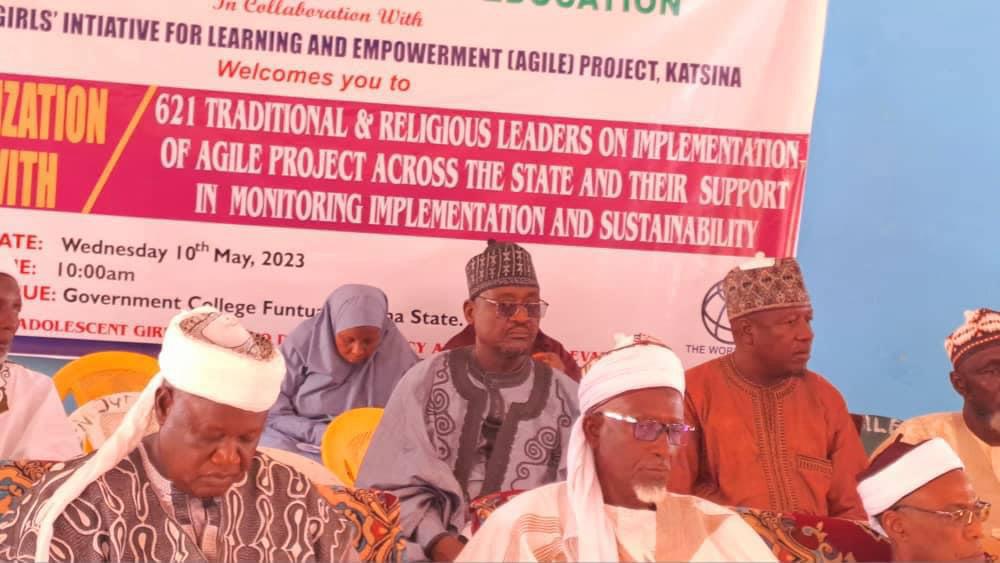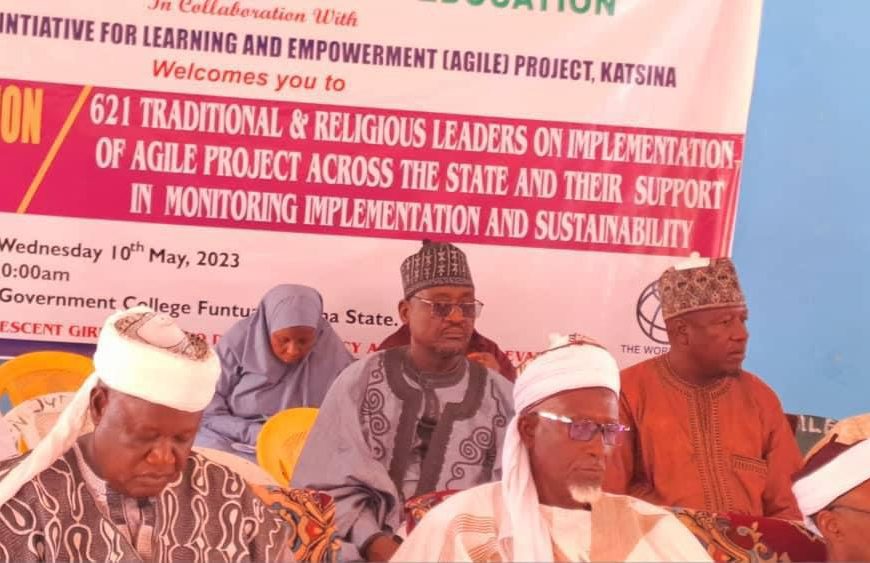Promoting social and behaviour change through communications campaigns, engagement with traditional rulers, and advocacy
The objective of this subcomponent is to promote a shift in social and cultural norms and perceptions which act as barriers to girls’ schooling through communications campaigns and advocacy to promote girls’ education and empowerment. Specifically, the subcomponent seeks to address the cultural, social and religious norms that may impede girls’ access to education and to emphasize the need to provide a safe and inclusive learning environment for all children. The project will carry out strategic communications campaigns at the federal and state levels with an overall objective of behavioral change, awareness-raising and project information dissemination. Campaigns will also promote the importance of the need for a safe, enabling and inclusive learning environment, including prevention and mitigation of GBV/SEA, and ensuring a specific focus on the inclusion of children with disabilities to help dispel existing myths and to address discrimination. State level awareness campaigns will promote social acceptance of girls’ education and promote hygienic practices to prevent COVID-19 transmission.
- Communications campaign at the national level. This campaign will be carried out at the national level using media, and special brand and digital platforms focusing on the benefits of girls’ education and empowerment. The campaign will feature a series of edutainment activities which will include a national debate, television dramas, sports competitions, and an awareness-raising platform to showcase the benefits of girls’ education and empowerment. Girls will feature on different platforms to promote education and this will be aired on national media platforms for wider publicity.
- State-level community engagement and communications/awareness campaigns.
Each state will carry out state-level community engagement and awareness campaigns. Messages will be conveyed to parents, families, traditional rulers and community members by key stakeholders including local religious and traditional leaders (RTLs), women’s groups, ward development committees and SBMCs. These messages will be conveyed through community dialogue and fora, house to house campaigns and engaging specific groups (for example, boys’ and men’s groups) on barriers girls face in accessing secondary education and the community’s role in making schools safe and inclusive. Messages from influential RTLs, media personalities, and leaders on social media will be amplified using digital platforms and these messages will be integrated into radio dramas, jingles, TV soap operas, and social media. Students will also be encouraged to carry out social responsibility activities in their neighbourhood communities to increase climate change awareness. TA will also be provided by a consulting firm with expertise on communications in each state to work with the respective departments and the SPIU in designing and producing creative local media content and messaging.


c) National and state-level engagement, advocacy and sensitization.
These efforts aim to expand and technically strengthen networks and platforms of influential voices to advocate for policies at the national and state levels towards increased coordination and effective policies for girls’ education and empowerment. The networks comprising RTLs and civil society advocates will strategically expand engagement at the Federal and state levels using evidence to deepen consideration, adoption and implementation of key policy decisions by key stakeholders to include government. To this end, this subcomponent will:
(a) develop new platforms and strengthen existing ones to support strategic policy advocacy that will encourage formal institutions to adopt policies and implement activities supporting girls’ education and empowerment;
(b) provide capacity-building support to relevant government officials to ensure effective and impactful communications on these issues; and
(c) support opportunities for high-level policy dialogue, fora for communications among key stakeholders, and national and state level relevant activities. A communications firm with expertise in policy advocacy will be contracted to support the implementation of some of the advocacy elements of the subcomponent at the federal level and states.
Implementation arrangements: The communication campaigns at the national level and the advocacy for policy implementation at the national and state levels will have a wide reach covering all participating states and will be implemented by the Communications Department and Gender Unit within the FME with the support of the National Project Coordination Unit (NPCU). Community engagement and awareness campaigns at the state level will cover six states (excluding Ekiti where the junior-to-senior secondary transition rates are relatively higher) and will reach all LGAs in these states. Increased attention will be given to poor LGAs and communities benefitting from the GSP supported under Subcomponent
The Social Mobilization and Communications Departments within the SMEs and SUBEB will be responsible for the implementation of this activity with the support of SPIUs. Non-governmental organizations (NGOs) will be engaged in each state to implement the community engagement and mobilization aspects.

